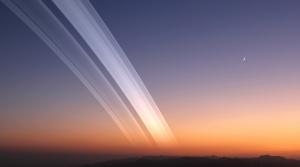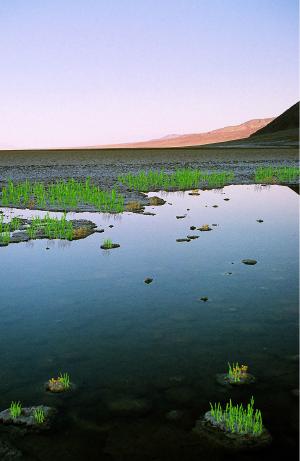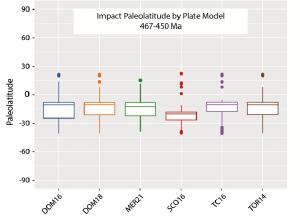Blog
Rings of an Ancient Sky
24 September 2024
 Kevin Gill/Flickr
Kevin Gill/FlickrImagine you could walk upon the Earth 460 million years ago. It is a geological period known as the Ordovician. Earth is a hot, greenhouse planet with great oceans teeming with life. Fish rule the seas. Among the piscene species one will eventually breach the shores of land and survive for a time, mother to the great vertebrates that will become dinosaurs, birds, mammals, and the first human. But that is millions of years in the future. For now the great continents are arid and bare. Only algae and a few other plants can be found nestled near the shores. The ancestors of grasses, flowers, and trees. It is a world that resembles early Mars more than modern Earth. You might easily imagine you were walking on a distant alien world than your own ancestral home, particularly if you looked up. For there you would see a rocky ring system arching across the sky.
It is a trope of science fiction that alien worlds have multiple moons, or a Saturn-like ring system. Something fantastical to show that our protagonists are far from home. But astronomers have long suspected that Earth might have had a ring system for a time. Now a new study finds that it did.1 The evidence comes not from the heavens, but from Earth itself.
 Jose Bonner
Jose BonnerIn the study the team looked at the distribution of meteorite impacts in the Ordovician period. Meteorites have struck Earth throughout its history, and you would expect the distribution of impacts to be evenly distributed evenly across the planet given the whims of random chance. The distribution of impacts during the Ordovician looks to be spread pretty evenly across Earth’s continents, until you realize that where the continents are isn’t where the continents were.
During the Ordovician period most of the land mass was concentrated in a supercontinent known as Gondwana. Modern Antarctica, South America, Africa and parts of other continents were clustered together. So when the team turned back the geological clock, the distribution of meteorite impacts started to line up, with most of them lying along the equatorial region of the time. Since the impacts can be dated across a span of 40 million years, they can’t have occurred from a single impact. The impacts must have occurred gradually, which is what you’d expect from a decaying ring system.
 Tomkins, et al
Tomkins, et alThe authors suspect that about 466 million years ago a mid-sized asteroid passed within 16,000 kilometers of Earth’s surface. This would be within the Earth’s Roche limit, where the tidal forces on the asteroid would be so strong it would rip apart. As a result the asteroid would scatter into small fragments, gradually forming a ring around our world. Ring systems aren’t particularly stable. Gravitational perturbations among the fragments would shift them over time, and the faint drag of Earth’s thin outermost layer of atmosphere would decay their orbits in time. After a few tens of millions of years there would be no trace of Earth’s rings, save for the chain of meteorite impacts scattered across the continents.
How humbling it is to think that what we see today was once an alien ringed planet we might long to visit in our science fiction dreams.
Tomkins, Andrew G., Erin L. Martin, and Peter A. Cawood. “Evidence suggesting that earth had a ring in the Ordovician.” Earth and Planetary Science Letters 646 (2024): 118991. ↩︎